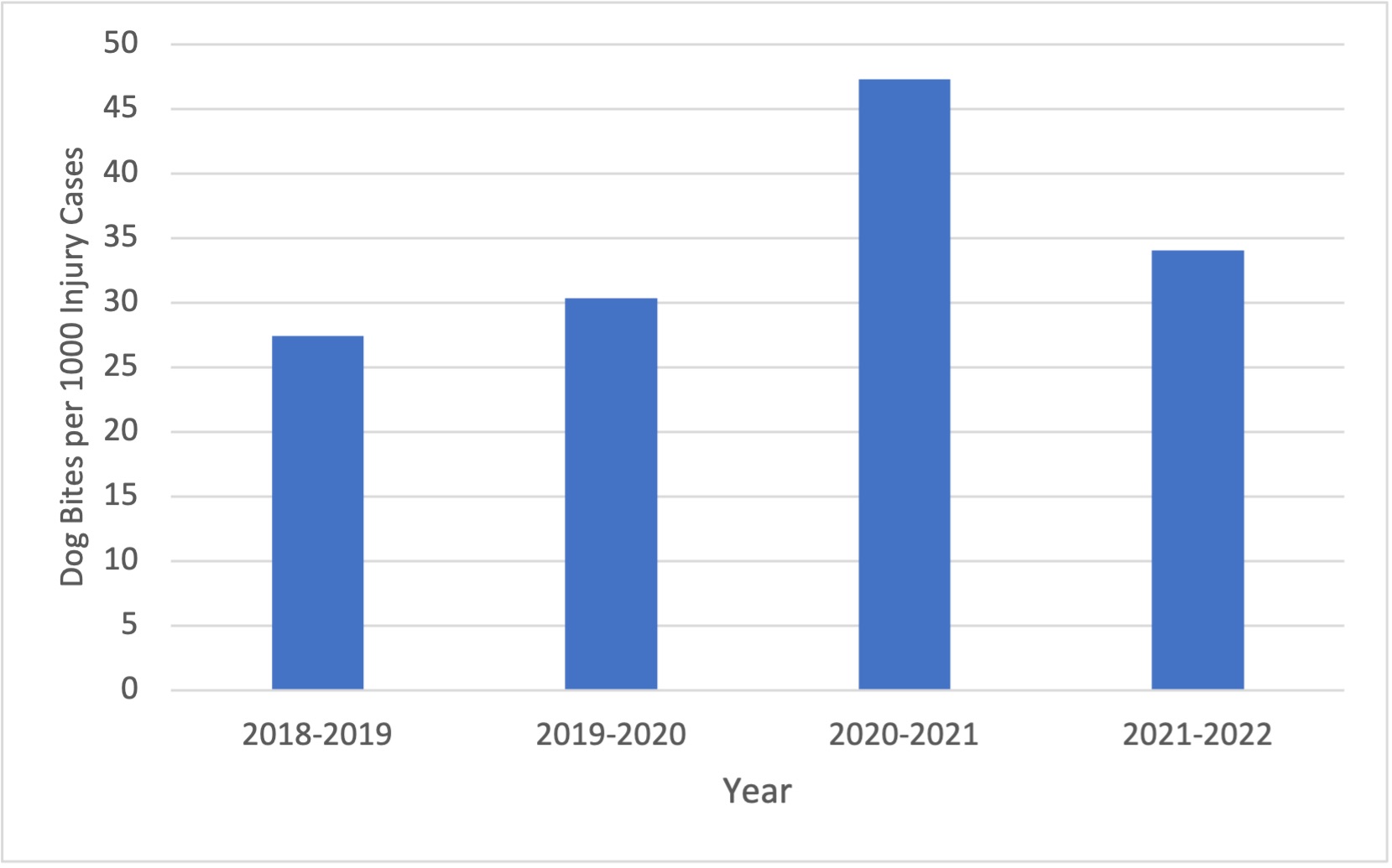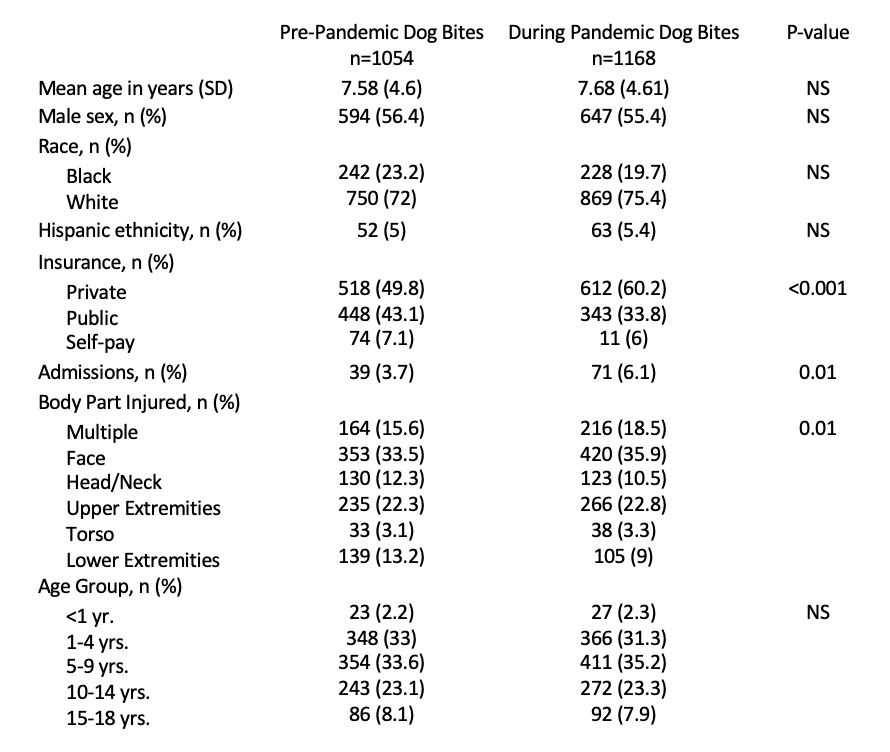Injury Prevention
Injury Prevention 1
131 - The Effects of the COVID-19 Pandemic on Pediatric Dog Bite Injuries
Publication Number: 131.121

Paul T. Menk, MD (he/him/his)
Resident
Cincinnati Children's Hospital Medical Center
Cincinnati, Ohio, United States
Presenting Author(s)
Background:
Shortly after the onset of the COVID Pandemic, when many schools and outside activities were suspended, dog adoption rates increased. It is unknown if increased dog adoption rates along with stay-at-home orders resulted in increases in the prevalence of dog bites in children.
Objective:
To examine the incidence and characteristics of dog bites in 0-18-year-old children seen in a pediatric emergency department (PED) during the COVID-19 pandemic compared to before the pandemic.
Design/Methods:
A retrospective review of electronic medical records of children evaluated in the PED of a level 1 pediatric trauma center and its satellite PED from March 1, 2018 through February 28, 2022 who had a discharge diagnosis of dog bite (ICD-10 W54.0XXA) was conducted. Subsequent patient visits for the same diagnosis were excluded. Pre-pandemic cases, March 1, 2018 through February 29, 2020, were compared to those that occurred during the pandemic, March 1, 2020 through February 28, 2022. Incidence rates, demographics, patient dispositions, and injury characteristics were analyzed using chi-square analysis and student’s t-tests.
Results:
Of the 65,204 total injury-related patients seen in the PED during the study months, 2,222 (3.4%) were dog bites. Compared to pre-pandemic cases, there were 114 more cases during the pandemic, and the incidence for the first year of the pandemic was 1.5 times higher than the 2 pre-pandemic years (Figure 1); the incidence returned closer to the pre-pandemic rate during the second year of the pandemic. There were no demographic differences between the pre-pandemic and during pandemic groups regarding age, sex, race, or ethnicity. However, more patients had private insurance during the pandemic compared to pre-pandemic (60.2% vs. 49.8%, p< 0.001; see Table 1). More patients were admitted during the pandemic compared to pre-pandemic (6.1% vs 3.7%, p < 0.05). Facial injuries and multiple injuries occurred more frequently during the pandemic than pre-pandemic (face 35.9% vs 33.5%, respectively and multiple 18.5% vs. 15.6%, respectively, p< 0.05). Total cases per age group did not vary between the pre-pandemic and during pandemic groups, with children ages 5 to 9 years most commonly affected (33.6% pre-pandemic; 35.2% during).
Conclusion(s):
There was a higher incidence of pediatric ED visits, higher admission rates, more privately insured patients, and an increase in facial and multiple body part injuries in children who were seen for dog bites during the COVID pandemic compared to pre-pandemic. These results will help with target injury prevention efforts in the event of a future pandemic.

